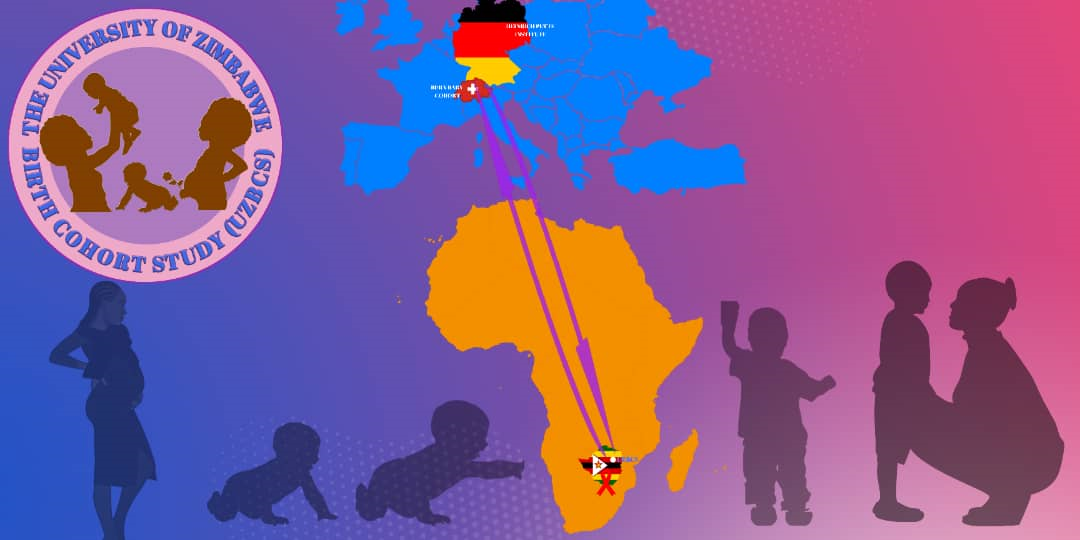Preamble
The emergence of new pathogens, climate change affecting food security, the dynamic movements of people coupled with risky sexual behavioral tendencies and sedentary lifestyle have exerted tremendous stress on health delivery system. This is further exacerbated by scarcity of both human and financial resources, more so for Africa where a paltry 3% of the global health workers man the African health delivery system, where ironically more than double the burden of preventable infectious diseases exist. There is urgent need to address such inequalities. This situation calls for training of innovative health professionals who are responsive to the ever-changing health care needs with capacities to timeously extract and synthesize essential information. This is in tandem with the University of Zimbabwe vision and goals of rebranding post-graduate programmes coupled with relevant research that benefit the society.
The HIV/AIDS pandemic remain a challenge, and has eroded health gains made in the past seventy years. On average 74% of Africans are exposed to two or more parasitic, bacterial and viral infections, whilst a quarter is grappling with three or more diseases including non-communicable diseases (NCDs), of which some are side effect(s) attributed to the sedentary lifestyle, ever increasing life stressors, malnutrition or due to the intake of antiretroviral therapy. This situation is exacerbated by poverty, limited access clean water and good sanitation facilities. Relative to single pathogen infections, co-infections and NCDs (comorbidities) may alter transmission dynamics of infections. Despite existence of constellation of comorbidities in our population, single pathogen researches are common and generally carried out in silos. Research findings from such studies may be misleading taking cognisance that in real local life situation solitary infections are rare in our setting. In addition, how different comorbidities’ combinations impact on host/pathogen genetics and treatment outcomes remains poorly described.
Establishing the nature, burden and consequences of comorbidities requires integrated research of diverse infectious diseases and NCD including the respect behavioral aspects over time. This is important for safer and more effective individualized medical care especially for the vulnerable population especially pregnant women and their infants. The existing adverse conditions can reduce the life expectancy and severely affect infant growth and neurodevelopment, especially within the first 1000 days with babies never reaching their full development potential. Sustainable multidisciplinary global networks are more likely to be solution to these myriad challenges. However, this does not come cheap as appropriate funding structure, infrastructure, research policies, equipment and enthusiastic research support staff need to be put in place.
Our Work
Full study title:
HIV EXPOSURE, DISEASE ACQUISITION AND PROGRESSION AMONG CHILDREN: ROLE OF MATERNAL IMMUNOGENETICS, VIRAL GENETIC DIVERSITY, HAART EXPOSURE, CO-MORBIDITIES AND PSYCHO-SOCIAL STATUS; THE UZ-CHS BIRTH COHORT (MRCZ/A/1968, JREC 15/18).
Short title: The University of Zimbabwe Birth Cohort Study (UZBCS)
Background to the study
Commencing lifelong antiretroviral therapy (ART) immediately following HIV diagnosis (Option B+), has greatly improved maternal-infant health. Thus, large and increasing numbers of HIV-infected women are on ART during pregnancy. Whilst the numbers of HIV exposed and infected (HEI) infants are dwindling by the day, courtesy of the current effective prevention of mother to child transmission of HIV (PMTCT) programs, the opposite is true for HIV exposed but uninfected (HEU) infants. Compared to their HIV-unexposed-uninfected (HUU) counterparts, HEU infants/children show higher rates of adverse outcomes, including mortality due to infectious and/or non-communicable diseases, impaired growth and (neuro)cognitive development. Understanding why and how this constantly growing population of HEU infants is at high risk of acquiring comorbities is critical as their problems will be of major public health importance in the near future. Therefore, there is an urgent need to understand the impact of HIV and early life ART exposures, immune-metabolic dysregulation, comorbidities and environmental confounders on adverse paediatric outcomes.
Method
600 HIV-infected and 600 HIV-uninfected pregnant women ≥20 weeks of gestation were enrolled from four primary health centres in high-density residential areas of Harare. Participants were followed as mother-infant-pairs at delivery, week(s) 1, 6, 10, 14, 24, 36, 48, 72 and 96 after birth. Clinical, socio-economic, nutritional and environmental data were collected and babies assessed for adverse birth outcomes, impaired growth, immune/neurodevelopment, vertical transmission of HIV, hepatitis B/C viruses, cytomegalovirus and syphilis. Maternal urine, stool, plasma, cord-blood, amniotic-fluid, placenta and milk including infant plasma, dried blood spots and stool were collected at during pregnancy and at follow-up visits.
Endpoints
The composite primary endpoint was stillbirth and infant mortality and morbidity within the first two years of life, and if possible into adolescents comparing HEU versus HUU infants. Maternal mortality and morbidity in HIV-infected versus -uninfected women is another primary outcome. Secondary endpoints include a range of maternal and infant outcomes. Sub-studies addressing maternal stress and malnutrition, maternal-infant latent tuberculosis, Helicobacter pylori infections, immune-metabolomic dysregulation including gut and breast-milk microbial dysbiosis.
Protocol registration; www.clinicaltrials.gov,trial registration number: NCT04087239.

